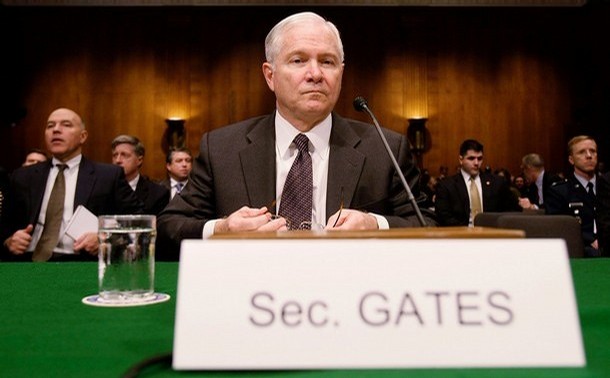This week the National Defense University and the Atlantic Council jointly hosted a major conference in Washington on the future of the Department of Defense, drawing literary license from President Obama by calling it “Audacity for Change – Transforming How the Pentagon Conducts Its Business.”
Underpinning this conference was the proposition that what happened to Wall Street and Main Street – implosion – could well happen to the Pentagon.
At first glance, such a provocative prediction could be swept away as fantasy. After all, the United States has the finest military in the world. For nearly eight years it has been waging the Bush administration’s global war on terror, where it won praise, despite the many setbacks and difficulties, in attempts to bring peace and stability to Iraq and Afghanistan.
Its weapons and combat systems are the world’s most advanced. Morale remains high, despite the stress on the forces due to repeated combat tours. And it is still able to recruit most of the people it needs.
But the forces that brought Wall Street and Main Street to their collective knees affect the Pentagon in strikingly similar ways. As excessive debt triggered the subprime crisis, the Pentagon has an annual appetite for about $750 billion to $800 billion a year to keep it operating at current levels. With the burgeoning national deficit and debt, defense cannot be immune to cuts, probably drastic. Reductions of a hundred billion dollars a year or more are inevitable, especially as supplemental appropriation spending, which has sustained the department for the past five years, is curtailed or ended.
Second, profound disagreements over strategy are not easily reconciled. About 80 percent of our forces are being used in non-conventional conditions of combat, in which the enemy has no army, navy or air force, often termed “small wars.” Eighty percent of our procurement programs are designed for “big wars” against some future peer enemy that will have powerful conventional armies and navies. We lack the resources to prepare for both. Yet we have not been able to make the choices that address this strategic impasse.
Third, the costs of buying virtually everything from major weapons systems to people, healthcare and pensions are skyrocketing. Programs to include F-22 and F-35 jet aircraft, the Army’s Future Combat Systems and the Navy’s Littoral Combat Ships have at least doubled in costs in real terms, taken twice as long to acquire and with about half as many as originally planned. Unfortunately, these trends cannot be reversed without radical change to how the Pentagon conducts the business side of its operations, and even then Congress and its constituents will make rationalization very difficult by inserting funds for systems the department neither wants nor needs.
Fourth, as in the private sector, oversight and regulation have been both too strict and too lax. As hedge funds were unregulated, Congress provided virtually no oversight on the trillions of dollars appropriated to defense since Sept. 11, 2001, particularly on the supplemental spending bills. And as the Sarbanes-Oxley Act imposed hugely expensive and intensive regulation over public companies, that oversight pales to the strictures on defense programs.
Left unchecked, these and other factors will do to the Pentagon what has happened on Main Street and Wall Street. And, ironically, the plus up of 92,000 additional ground forces without funding for future training, equipping, housing, medical costs and retirement will exacerbate the huge budget drain. The counterargument that Congress and the White House somehow will find money to prevent this implosion ignores economic realities and the fiscal disaster sweeping across the nation and the world and fatigue in general over what will be a decade or more of continuous war.
What must be done? First and most important is to recognize these critical conditions. Second must be having the political courage to make the critical choices and decisions that will align resources with priorities, understanding that real change is essential. Third is to set out the future direction, including the need for organizational changes that bring the original National Security Act of 1947 in line with reality and the redundant competing decision-making authorities in the Pentagon.
The direction is clear. Ground forces engaged in “small wars,” such as in Iraq and Afghanistan, must become, in military jargon, the main or supported forces. And the Navy and the Air Force are the supporting forces, meaning fewer of them are needed. To keep the “big war” option open, a smaller but still substantial number of forces can be assigned. And all of this must fit into future budgets probably under $600 billion a year or less.
The alternative will be an implosion of our military capacity and ability to safeguard the nation. But people must anticipate the crisis that lies ahead and then someone must lead if this implosion is to be avoided.
Harlan Ullman is a member of the Atlantic Council’s Strategic Advisors Group and a Distinguished Senior Fellow at the National Defense University. This article was previously published in UPI’s Outside View.
Image: SecDefGates.jpg
